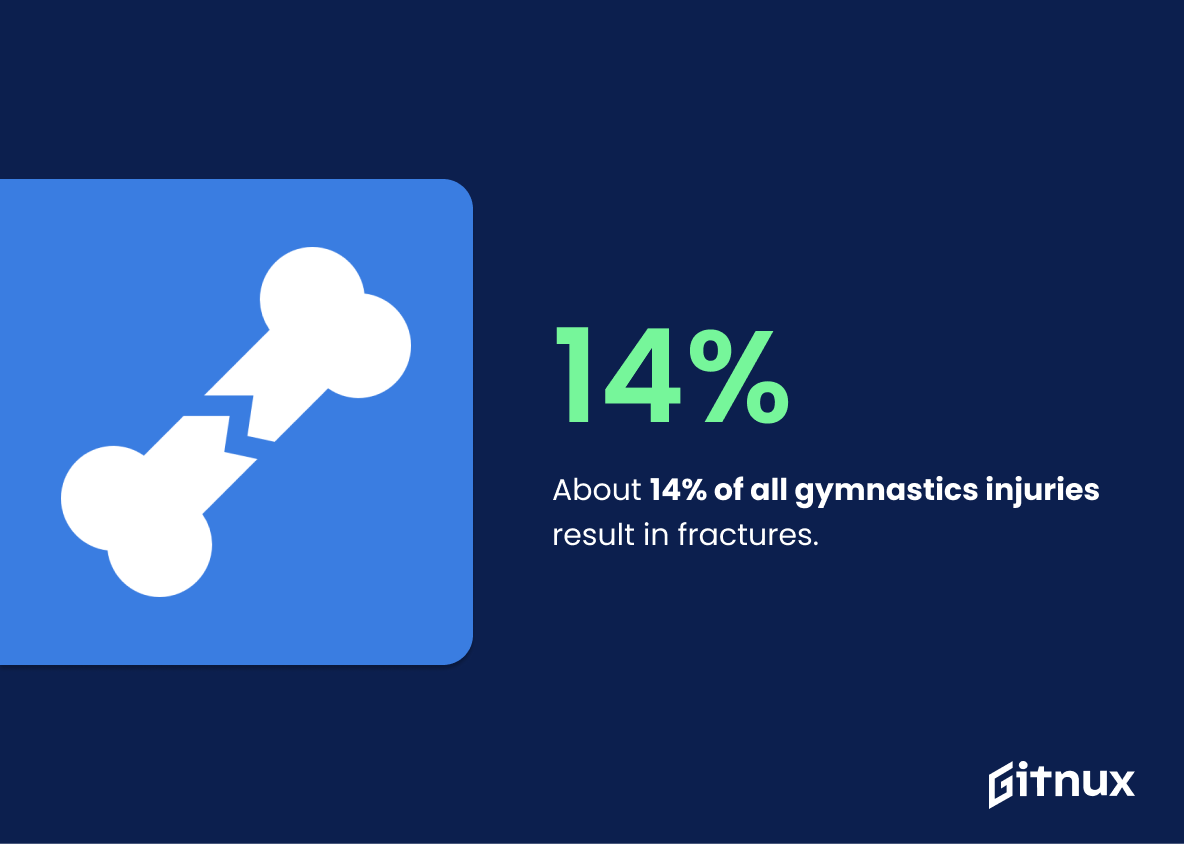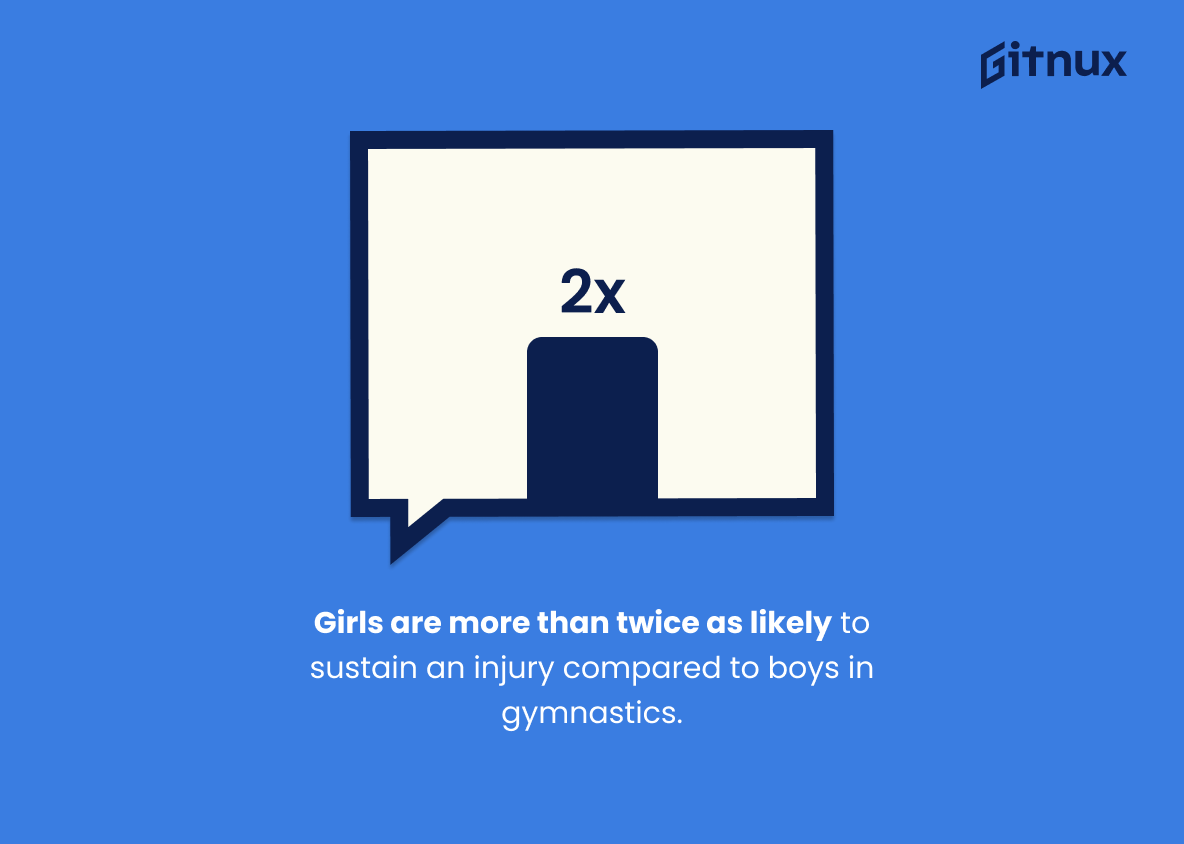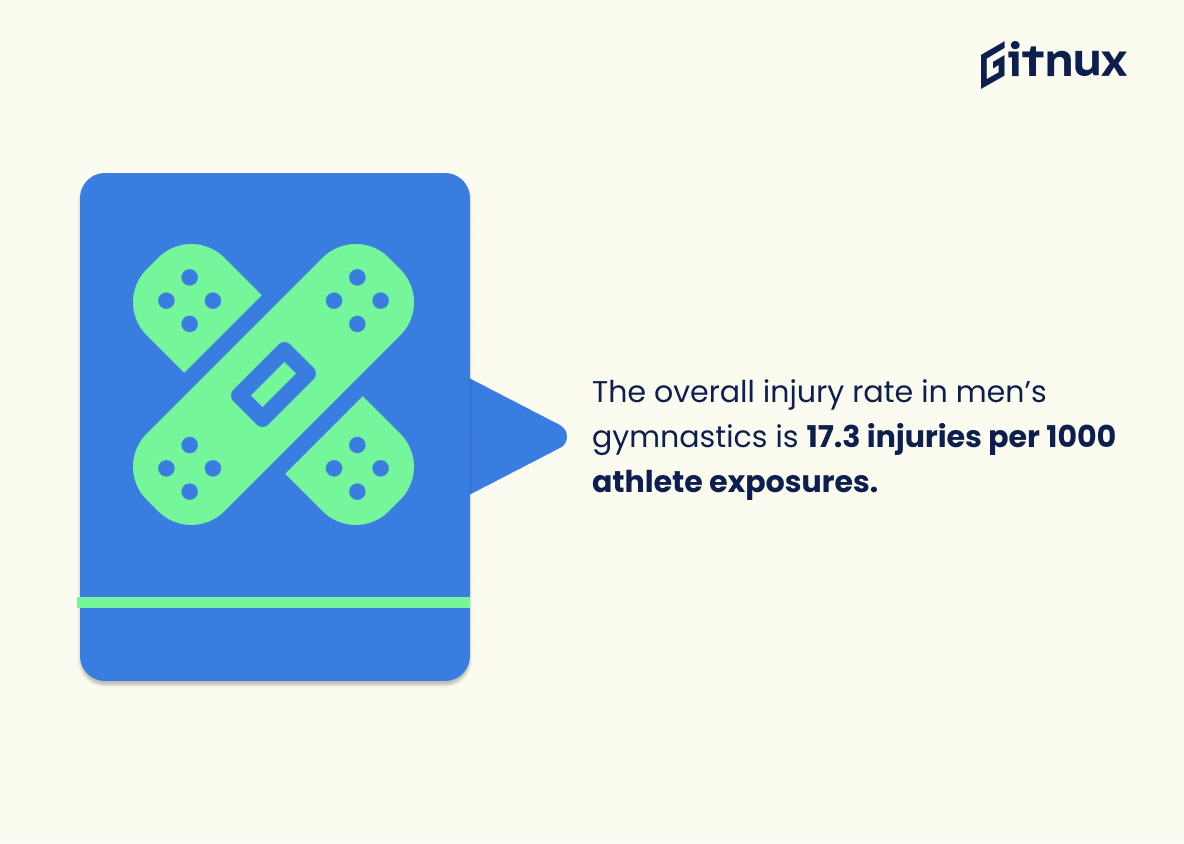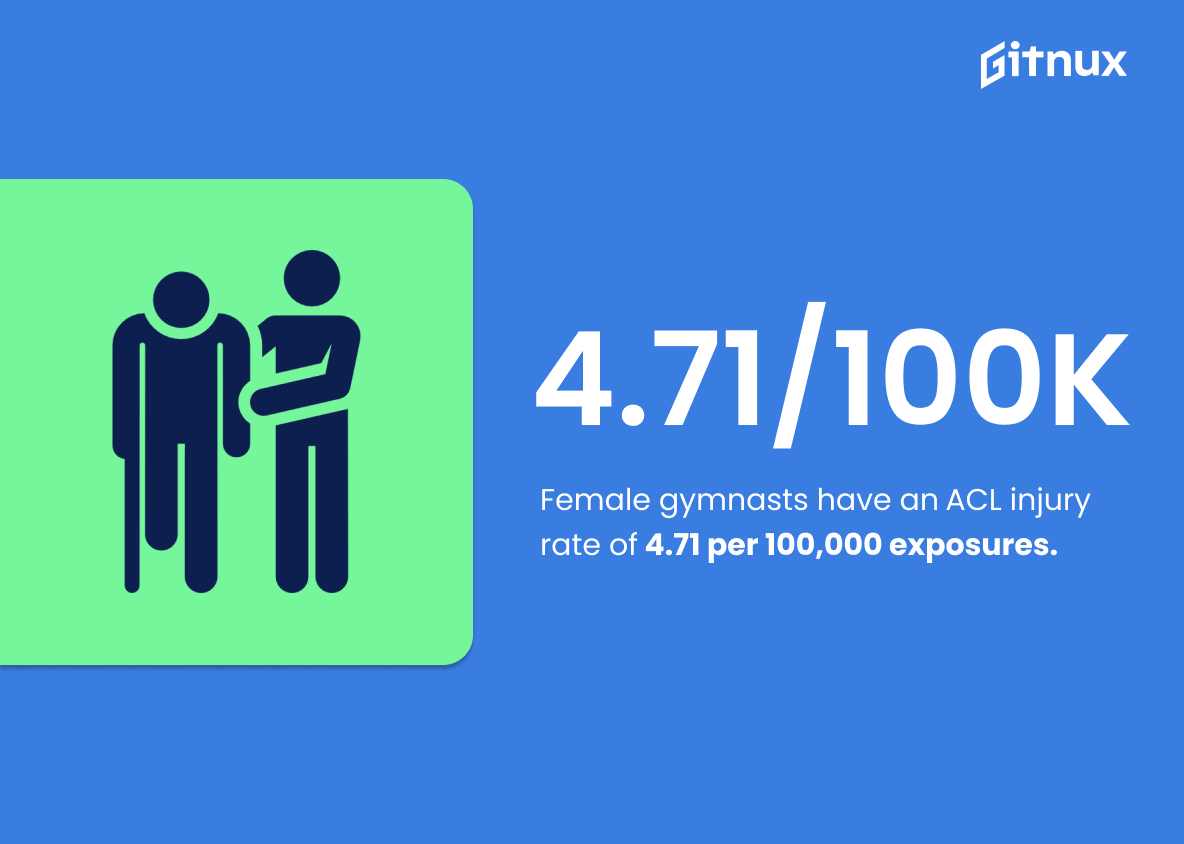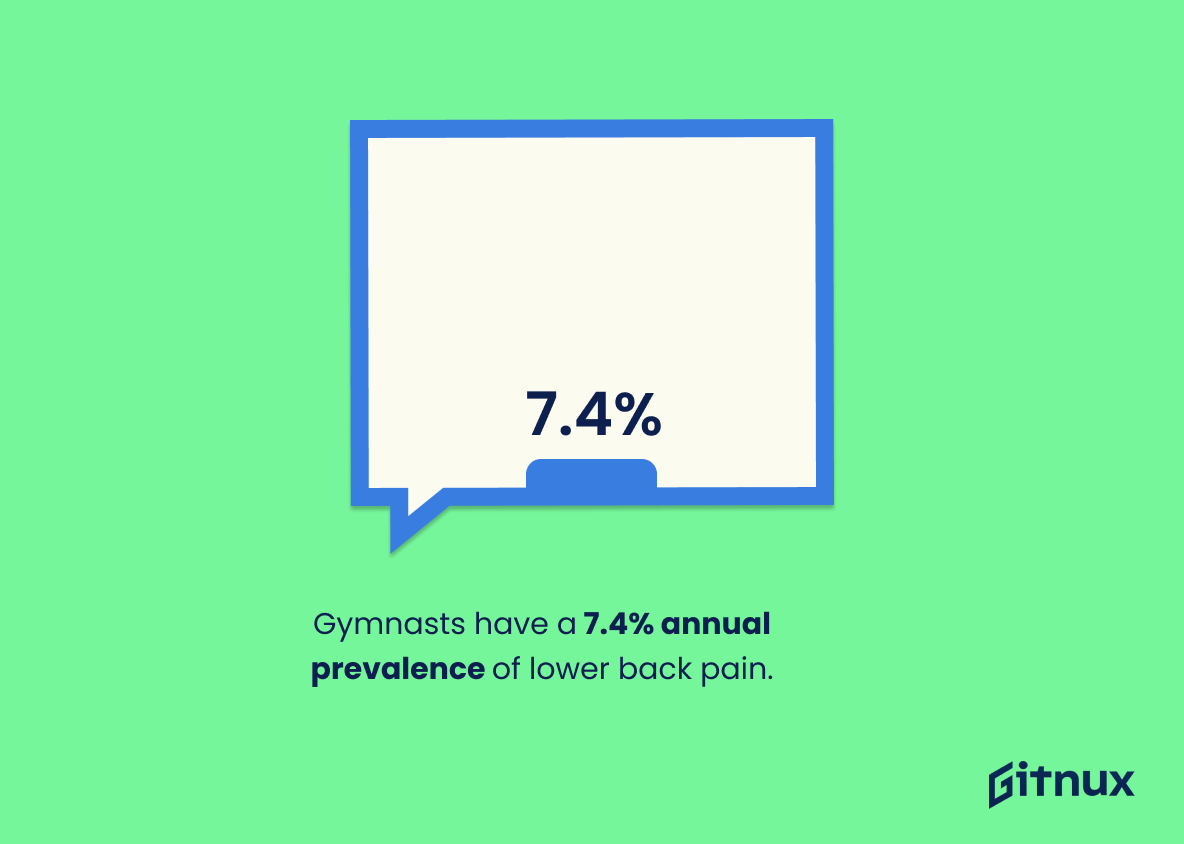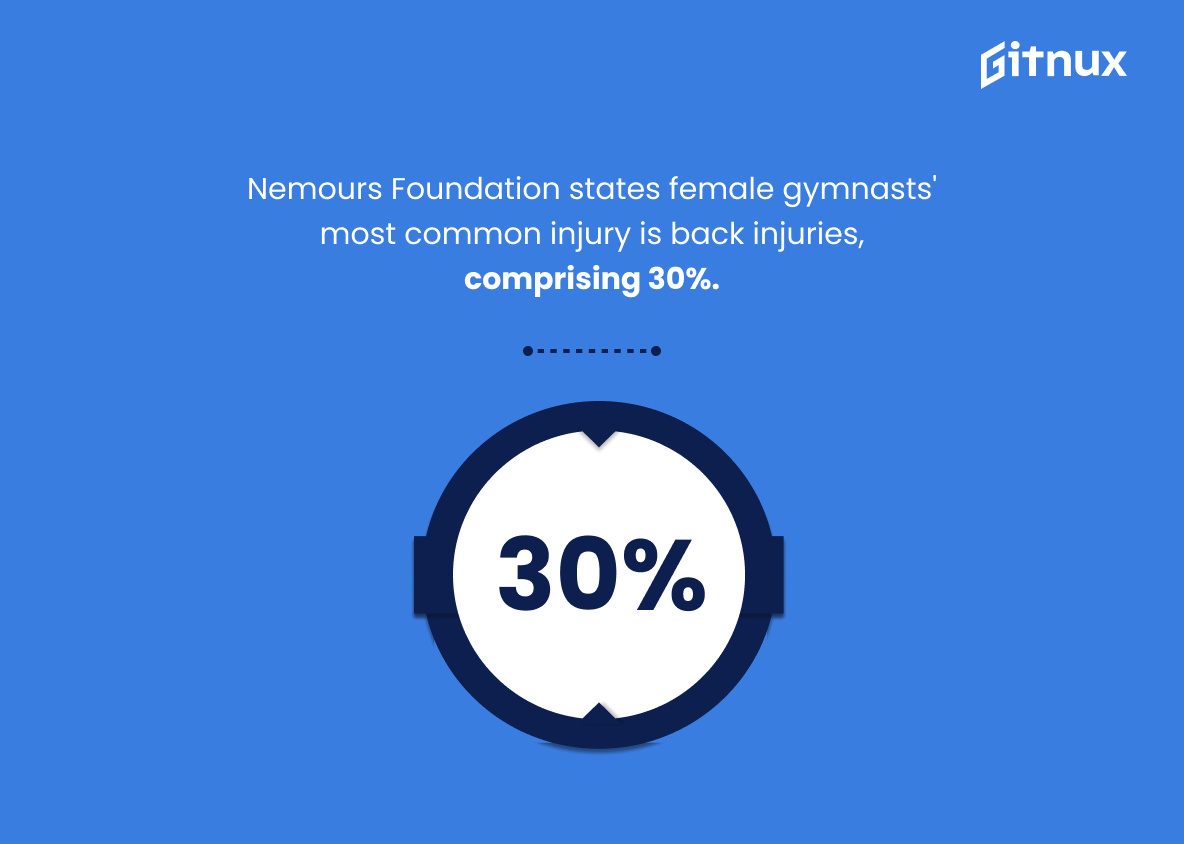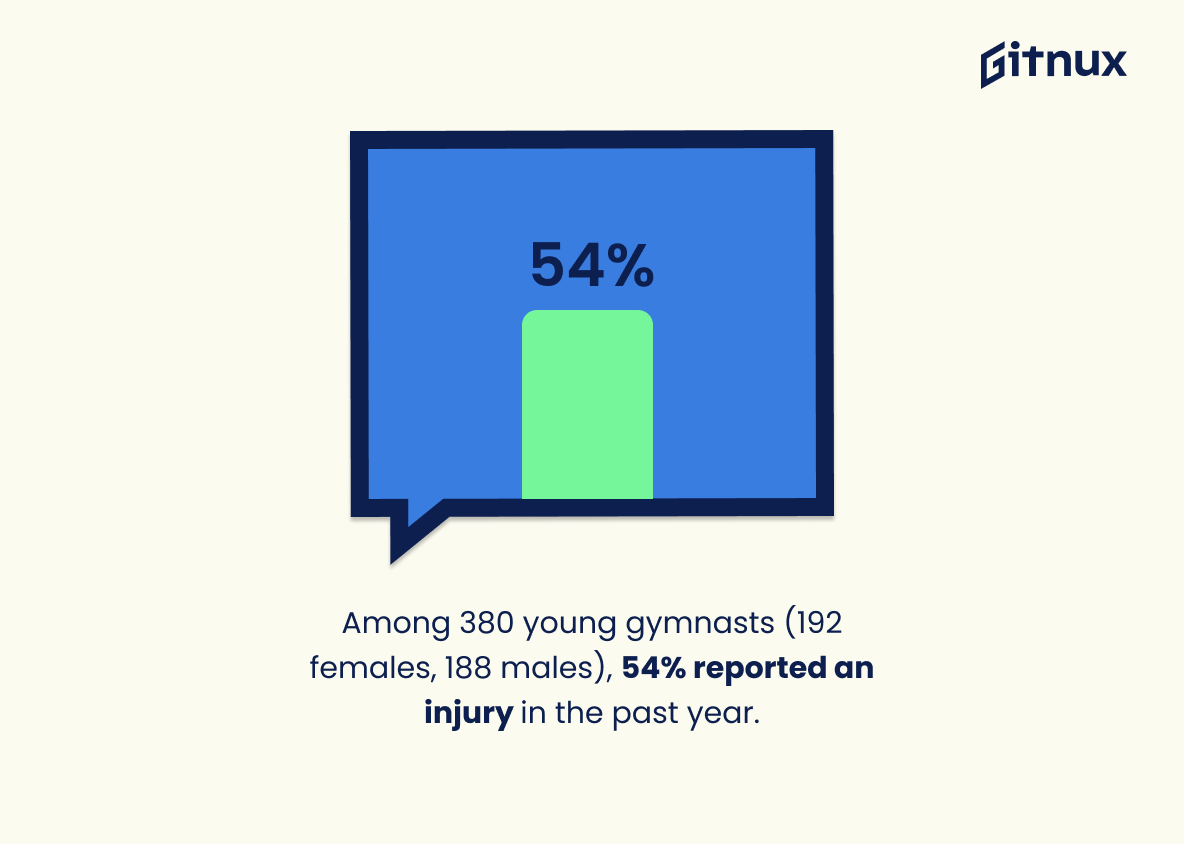Gymnastics is a popular sport that requires strength, flexibility and agility. Unfortunately, it also carries with it the risk of injury. According to statistics from various sources, approximately 100,000 gymnastics-related injuries are treated in US emergency departments each year. About 40% of all gymnastics injuries involve the lower extremities while 30% involve the upper extremities.
Gymnastics has been found to have one of the highest injury rates among female athletes – 12.3 injuries per 100,000 participants – and wrist injuries account for 18.1%. Additionally, 14% of all gymnastic related accidents result in fractures; girls are more than twice as likely to sustain an injury compared to boys; training results in 2.24 per 1000 athlete exposures; men’s gymnasts suffer 17 times more often than women’s at 17/1000 AEs; floor exercises cause 52%; hand rips 47%, ACL 471/100k AE rate for females only ; competition 26x higher (26/1000) vs practice 3x higher (3/9); 75% acute 25 % overuse 740 annual prevalence LBP 42 stress fracture 56 growth plate inj 486 serious inj /100KAE 60 sprains & strains 54 reported 1+inj past yr.
This statistic is a crucial insight into the prevalence of gymnastics injuries, highlighting that the lower extremities are more prone to injury than the upper extremities. This information is essential for any gymnast or coach looking to reduce the risk of injury, as it provides a clear indication of which body parts require the most attention and care.
Gymnastics has the highest injury rate among female athletes – 12.3 injuries per 100,000 participants.
This statistic is a stark reminder of the risks associated with gymnastics, particularly for female athletes. It highlights the need for increased safety measures and greater awareness of the potential for injury in the sport. It also serves as a warning to those considering taking up gymnastics, that they should be aware of the risks and take the necessary precautions to protect themselves.
Gymnastics Injuries Statistics Overview
About 14% of all gymnastics injuries result in fractures.
This statistic is a stark reminder of the severity of gymnastics injuries, highlighting the fact that a significant portion of them can result in fractures. It serves as a warning to gymnasts and coaches alike to take extra caution when practicing and competing in the sport.
Girls are more than twice as likely to sustain an injury compared to boys in gymnastics.
This statistic is a stark reminder of the risks that female gymnasts face when they take part in the sport. It highlights the need for greater safety measures to be taken to protect female gymnasts from sustaining injuries, and for more research to be done into the causes of these injuries. It also serves as a warning to parents and coaches of female gymnasts to be extra vigilant in ensuring that their athletes are safe and protected.
Gymnastics injury rates in training are 2.24 per 1000 athlete exposures.
This statistic is a crucial indicator of the safety of gymnastics training, as it provides a measure of the likelihood of an athlete being injured while training. It is important to understand the injury rate in order to ensure that athletes are being properly protected and that the sport is being practiced in a safe manner. This statistic is essential for any discussion of gymnastics injuries and their prevention.
The overall injury rate in men’s gymnastics is 17.3 injuries per 1000 athlete exposures.
This statistic is a powerful indicator of the prevalence of injuries in men’s gymnastics, providing a clear picture of the risks associated with the sport. It serves as a stark reminder of the importance of safety protocols and proper training for athletes, as well as the need for coaches and medical personnel to be aware of the potential for injury. By highlighting the injury rate, this statistic serves as a reminder of the need for continued vigilance in the prevention of injuries in the sport.
47% of gymnasts have reported hand injuries, with hand rips being the most common.
This statistic is a stark reminder of the physical toll that gymnastics can take on the body, particularly the hands. It highlights the importance of proper training and safety protocols to ensure that gymnasts are able to perform their routines without fear of injury. By understanding the prevalence of hand injuries, coaches and athletes can take the necessary steps to reduce the risk of such injuries occurring.
Female gymnasts suffer from anterior cruciate ligament (ACL) injuries at a rate of 4.71 per 100,000 athlete exposures.
This statistic is a stark reminder of the risks associated with gymnastics. It highlights the fact that female gymnasts are particularly vulnerable to ACL injuries, with a rate of 4.71 per 100,000 athlete exposures. This is a significant number, and it serves as a warning to those involved in the sport to take extra precautions to protect themselves from such injuries.
Gymnasts have a 7.4% annual prevalence of lower back pain.
This statistic is a stark reminder of the potential for lower back pain among gymnasts. It highlights the importance of taking preventative measures to reduce the risk of injury, such as proper warm-up and stretching exercises, as well as the need for prompt medical attention if any signs of lower back pain are present.
A study found that 42% of gymnasts have experienced stress fractures in their spines.
This statistic is a stark reminder of the physical toll that gymnastics can take on the body. It highlights the need for proper training and safety protocols to be in place to protect gymnasts from the risk of stress fractures in their spines. It also serves as a warning to those considering taking up the sport to be aware of the potential risks and to take the necessary precautions to avoid injury.
Elite-level gymnasts have an estimated risk of serious injury at 4.8 per 100,000 athlete exposures.
This statistic is a powerful indicator of the potential risks associated with elite-level gymnastics. It demonstrates that even at the highest level of the sport, athletes are still exposed to a significant risk of serious injury. This statistic serves as a reminder that gymnastics is a physically demanding sport and that athletes should take the necessary precautions to protect themselves from injury.
According to the Nemours Foundation, back injuries are the most common type of injury for female gymnasts, accounting for 30% of all reported injuries.
This statistic is a stark reminder of the physical toll that gymnastics can take on female athletes. It highlights the need for coaches, parents, and athletes to be aware of the risks associated with the sport and to take steps to reduce the likelihood of back injuries. It also serves as a reminder that proper training and safety protocols should be in place to protect gymnasts from the potential for serious injury.
About 60% of gymnastics injuries involve sprains and strains.
This statistic is a telling indication of the prevalence of sprains and strains in gymnastics injuries. It highlights the importance of taking proper precautions and being aware of the risks associated with the sport. Knowing that the majority of gymnastics injuries involve sprains and strains can help athletes and coaches take the necessary steps to prevent them.
In a sample of 380 young gymnasts (192 females and 188 males), 54% of gymnasts reported at least one injury in the past year.
This statistic is a powerful indicator of the prevalence of injuries in the world of gymnastics. It shows that more than half of the young gymnasts surveyed experienced an injury in the past year, highlighting the need for greater awareness and prevention of injuries in the sport. This statistic is an important reminder that gymnastics is a high-risk sport and that proper safety measures must be taken to ensure the health and safety of all gymnasts.
Conclusion
Gymnastics is a sport that requires strength, flexibility and skill. Unfortunately, it also carries with it the risk of injury. According to statistics from various sources, approximately 100,000 gymnastics-related injuries are treated in US emergency departments each year. About 40% of all gymnastics injuries involve the lower extremities while 30% involve the upper extremities. Gymnastics has one of the highest injury rates among female athletes – 12.3 per 100,000 participants – and wrist injuries account for 18.1%. Approximately 14% of all gymnastic injuries result in fractures and girls are more than twice as likely to sustain an injury compared to boys in this sport (6).
In terms of training versus competition exposure rate for men’s gymnasts specifically; 17.3 vs 26/6 respectively (8). Additionally 47%, 54%, 75%, 7:4 % & 42 % reported hand rips ,injuries over past year , acute & back pain related issues respectively . Elite level athletes have 4:8 serious injures per 1000 athlete exposures(17) Overall these figures demonstrate how important it is for those involved in competitive or recreational activities involving physical exertion such as gymnasitcs take necessary precautions when participating so they can stay safe and healthy.
References
0. – https://www.nationwidechildrens.org
1. – https://www.verywellfit.com
2. – https://www.kidshealth.org
3. – https://www.sportsci.org
4. – https://www.ussa.edu
5. – https://www.aemo.ch
6. – https://www.pubmed.ncbi.nlm.nih.gov
7. – https://www.uofmhealth.org
8. – https://www.bjsm.bmj.com
9. – https://www.ncbi.nlm.nih.gov
